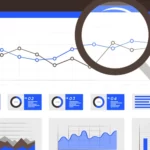In today’s rapidly evolving digital landscape, staying ahead of the curve is not just an advantage; it’s a necessity. For small and medium-sized businesses (SMBs), this can seem like a daunting task. With limited resources and access to information, how can these entities compete with their larger counterparts? The answer lies in making technology accessible and understandable. By democratizing tech insights and considering modern payment methodologies, businesses of all sizes can leverage the digital tide to propel themselves forward, transforming traditional models and carving out competitive edges in crowded markets.
The transformative potential of technology
In the pursuit of bridging the digital divide, businesses must acknowledge the transformative potential inherent in technology. By embracing the vast array of online resources, participating in webinars and engaging with virtual networks, SMBs can glean invaluable insights crucial for enhancing digital literacy. This empowerment facilitates the development of informed strategies capable of expanding operations and augmenting market reach. Indeed, fostering a culture of continual digital learning stands as a cornerstone in ensuring that businesses retain flexibility and resilience amidst the dynamic landscape of the digital economy.
It is noteworthy that bridging the digital divide encompasses more than just providing access to new technologies. Genuine empowerment entails endowing businesses with the skills necessary to analyze and leverage data in a manner that informs strategic decision-making. Tailored training programs, comprehensive online courses and collaborative knowledge-sharing initiatives among peers can serve as pivotal tools in nurturing a digitally proficient workforce. Through such endeavors, we unlock the potential for innovation and efficiency enhancements across industries, fostering an environment wherein technological adeptness translates into tangible economic success. Additionally, enabling options such as credit card deposits can further streamline financial transactions and enhance accessibility to digital tools and resources for small and medium-sized businesses.
To illustrate, consider the case of online casinos, a sector where digital fluency and innovation are paramount. These platforms exemplify how integrating advanced payment solutions, like allowing credit card deposits, not only simplifies user transactions but also broadens market accessibility. This ease of financial engagement attracts a diverse user base, from casual players to serious enthusiasts, thereby expanding the casino’s reach and operational scale. Similarly, e-commerce businesses thrive by employing sophisticated data analytics to tailor customer experiences, optimize supply chains, and predict market trends, thereby ensuring customer satisfaction and loyalty. On another front, tech startups leverage cloud computing and agile development methodologies to rapidly prototype, test, and deploy new products, significantly reducing time-to-market and fostering a culture of continuous innovation. Each of these examples underscores how businesses, irrespective of their domain, can harness digital advancements to redefine their operational landscapes, drive growth, and enhance competitiveness.
The symbiotic relationship between technology and financial markets: a deep dive
Understanding the intricacies of the digital economy, including crypto payments of cryptocurrencies like Solana and credit card deposits, is paramount for businesses, particularly those operating within the financial sector. The advent of fintech innovations has revolutionized the landscape, introducing novel methods for conducting transactions and managing finances. These advancements extend beyond traditional banking institutions and investment firms, fundamentally altering the dynamics of monetary interactions across all sectors.
In this dynamic interplay between technology and financial markets, you can witness the emergence of a new paradigm in digital finance that is reshaping customer expectations. Contactless payments, e-wallets and mobile banking applications have become commonplace, setting a precedent for both convenience and security in financial transactions. For businesses, the seamless integration of these technologies can significantly enhance customer satisfaction, thereby fostering loyalty and driving revenue growth. Esteemed financial influencers and market analysts posit that the adoption of these digital tools represents not merely a passing trend but rather a profound and enduring shift in the financial landscape.
Decoding the future: how emerging technologies are shaping industries
The emerging technologies of AI, blockchain and IoT are poised to transform business operations and customer interactions. AI offers insights into consumer behavior, blockchain enhances security and IoT drives data-driven processes. Embracing these innovations streamlines operations and fosters growth. Recent reports project AI investments to reach $98 billion by 2023, the global blockchain market to grow to $23.3 billion and the IoT market to hit $1.5 trillion by 2027. These statistics underscore the momentum behind these transformative technologies.
Industries far and wide are standing witness to a technological metamorphosis that promises not just incremental changes but a seismic shift in operational paradigms. With each leap in technology, savvy businesses are at the front experimenting with new applications, whether they involve AI-driven customer service platforms or blockchain-enabled supply chains. By studying these pioneering ventures, other businesses can learn and apply these lessons to decode their future paths in a marketplace that values innovation and agility.
Illuminating the path: expert perspectives on navigating the tech landscape
With so much information available, it can be overwhelming to try to stay on top of every development in the tech world. This is where expert insights come into play. Focused resources that cut through the noise and offer actionable advice can be a lifeline for businesses looking to navigate the tech landscape. Continuous learning and professional development are key in this fast-paced environment. For companies to thrive, they must not only understand current trends but also anticipate future shifts. Knowledge is power and in the field of technology, it’s the foundation of success.
Amidst technological advancements, it is the voice of industry experts that can shine a light on the most consequential developments. Through podcasts, thought-leadership articles and technology summits, professionals can distill complex information into actionable intelligence. These insights can steer businesses toward strategic tech implementations, provide warnings about potential disruptions and uncover hidden opportunities for innovation and growth within their markets.
From bytes to business strategies: leveraging technology for market advantage
Technology is more than just a set of tools; it’s a strategic asset that can be used to achieve business objectives. Data analytics, for instance, enables businesses to make informed decisions based on real-time information. Similarly, digital marketing strategies can expand a brand’s reach far beyond traditional channels, connecting with customers on a global scale. In today’s market, leveraging technology is not optional; it’s essential. Businesses that harness the power of tech not only improve their operations but also gain a significant advantage in their industries.
In the digital arena, the strategic application of technology is transforming ‘bytes’ into robust business strategies. By harnessing the analytic prowess of Big Data, companies can tailor their services to the nuanced preferences of their clientele. Further, the adoption of cloud-based solutions can dramatically reduce operational costs while increasing scalability and collaboration across global teams. Thus, in the pursuit of market advantage, businesses that proficiently leverage technology not only succeed but define the benchmarks of industrial excellence.












